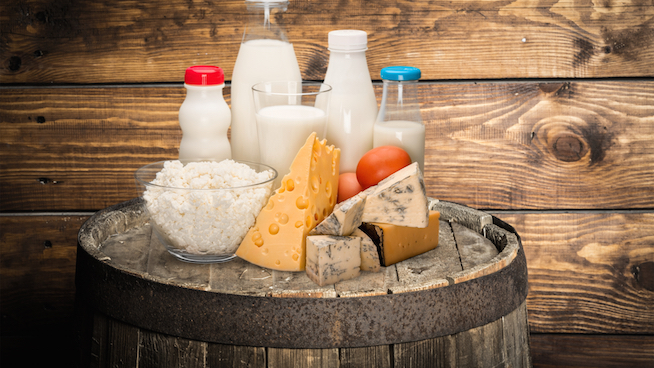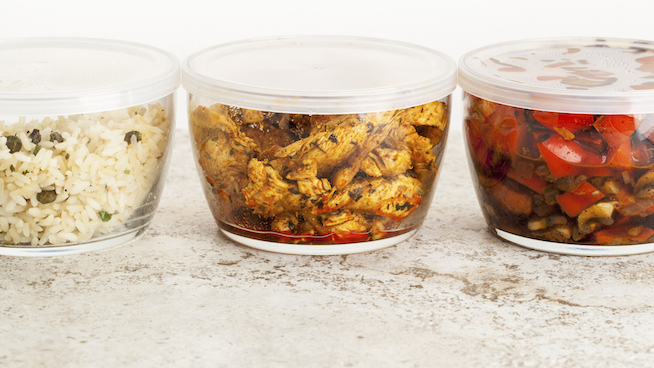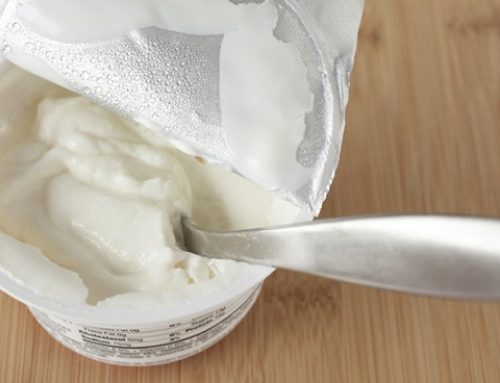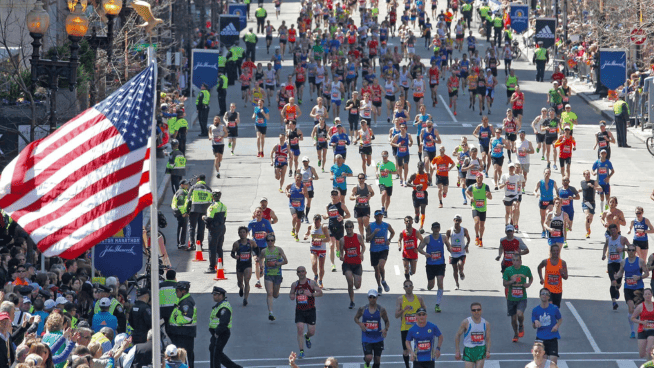Cutting Fat with Deron Williams
Learn how eating the right foods at the right times helped Deron Williams transform his body and make it into the NBA.
After leading the Fighting Illini to the 2005 NCAA Tournament Finals, junior starting guard Deron Williams set his sights on a new goal: “trying to get a job.”
Posting his resume on Monster.com wouldn’t help Williams start the career of his dreams. Instead, he needed to post impressive weight and body comp numbers to earn a spot on an NBA roster.
“I had to drop my body fat, lean up and put on more muscle mass. I had to lose weight without losing my strength,” Williams explains.
Needing professional guidance to transform his body, Williams turned to Erick Land, founder of Xtraordinary Sports Performance, Dallas, Texas. Combining his knowledge of chiropractics with expertise gained from two National Academy of Sports Medicine certifications, Land revamped Williams’ eating habits and meal plan.
“Deron didn’t previously have much nutrition counseling,” Land says. “He was eating all bad, fried foods. I had to change his outlook and educate him on what to expect from being healthy, eating right and fueling his body to burn fat at a faster rate. When Deron got here, I told him nutrition has to be priority number one.”
Eliminating all processed and fried foods, Land implemented a chicken-and veggie-heavy diet that included a lean protein, green vegetable and low glycemic carb in every meal. Land stressed the importance of eating four to five smaller meals throughout the day to keep Williams’ body fueled for workouts, boost his metabolism to burn more fat and take in the right amount of protein to rebuild muscles from intense training.
Although Land mapped out a perfect eating plan, Williams had a hard time buying into it. “It was hard for Deron to adjust to a lot of green vegetables—he didn’t like green stuff,” Land says. “We went round and round on this, and he would look at me out of the side of his eye like, ‘Man, do I really have to eat this stuff?’”
“I don’t do veggies,” Williams says. “It was tough to cut out stuff I’ve been accustomed to eating for 20 years.”
Williams ate 1,200 calories per meal to take in 5,000-6,000 calories per day. In the two and a half months leading up to the pre-draft camp in Chicago, he lost 20 pounds of fat, gained five pounds of lean muscle and dropped his body fat from 13 percent to 7.5 percent. “A lot of people in Chicago saw a change in my body. It made them feel even better about me, because it was the one doubt a lot of teams had,” Williams says.
The eating plan also drove improvements in strength, speed, agility and quickness. So impressive were his numbers, Williams earned the perfect job. The Utah Jazz drafted him as the third overall selection in the 2005 NBA Draft.
Deron Williams’ Plan for Cutting Fat
Green leafy stuff
Land recommends eating one cup of high fiber, low glycemic vegetables—such as asparagus, broccoli and green beans—at every meal.
“The fiber in green vegetables acts like a bristle in your ascending, descending and transverse colon,” Land explains, “which helps with weight management and strengthens your immune system.
“Your body is essentially a highway clogged up with traffic in your colon. When that isn’t cleaned out, your body stores more toxins. You get stopped up and won’t be regular. Eating green vegetables cleans you out and makes the immune system stronger, which helps maintain homeostasis—a stable internal environment.”
Land’s suggestions for low glycemic vegetables
| Food | Glycemic Index Rating |
| Asparagus…………………………….. | 15 |
| Broccoli ………………………………. | 15 |
| Green Beans…………………………. | 15 |
Highs and lows
The glycemic index measures the immediate effect carbohydrates have on blood glucose (sugar) levels. High glycemic carbs break down quickly during digestion and cause blood glucose levels to spike; low glycemic carbs break down slowly and raise blood glucose levels gradually.
The body converts glucose into glycogen, which fuels the muscles. More glucose in the bloodstream produces a quicker conversion into glycogen. Thus, immediately after each workout, Williams ate high glycemic foods to replenish his muscles with glycogen.
“After a workout, your blood sugar is down because you’ve used all your energy,” Land explains. “You need to replenish that to recover. If you don’t have a high glycemic carb after a workout, your muscles get weak and fatigued.”
Land had Williams eat low glycemic carbs at every meal to raise and maintain his blood sugar levels. “Keeping energy at a constant level allows for better workouts,” he says.
Land’s Suggestions Low Glycemic Carbohydrates
| Food | Glycemic Index Rating |
| Oatmeal ……………………………… | 49-55 |
| Yams……………………………………. | 51 |
| Brown Rice …………………………. | 55 |
Land’s Suggestions High Glycemic Carbohydrates
| Food | Glycemic Index Rating |
| White Rice…………………………… | 58 |
| Grits …………………………………… | 75 |
| Potato (microwaved) …………….. | 82 |
Where’s the beef?
Protein was a big part of Williams’ eating plan, but it didn’t come from our good friend Mr. Cow. Instead, Williams got quality protein from chicken breast and turkey breast—and, every now and then, pork tenderloin.
Williams’ diet required 40-50 grams of protein each meal. To reach this target, he ate six to eight ounces of lean meat at every sitting. The large daily protein intake allowed Williams’ broken down muscles to repair themselves and continue to grow in strength and size.
“I wanted Deron’s body to have plenty of protein so he didn’t burn muscle,” Land says. “If you don’t have enough protein, your body works in a catabolic state, which means muscle-eating.”
According to Land, eating excessive amounts of protein each meal is not advantageous. “Your body only nets about five to six percent of the protein you put into it. You get rid of the rest in the bathroom.”
Land’s suggestions for lean protein
| Food (6oz) | Protein | Fat |
| Chicken Breast ………… | 48g ……….. | 3.0g |
| Turkey Breast ………….. | 52g ………… | 1.2g |
| Pork Tenderloin ……….. | 52g ……….. | 8.2g |
RECOMMENDED FOR YOU
MOST POPULAR
Cutting Fat with Deron Williams
Learn how eating the right foods at the right times helped Deron Williams transform his body and make it into the NBA.
After leading the Fighting Illini to the 2005 NCAA Tournament Finals, junior starting guard Deron Williams set his sights on a new goal: “trying to get a job.”
Posting his resume on Monster.com wouldn’t help Williams start the career of his dreams. Instead, he needed to post impressive weight and body comp numbers to earn a spot on an NBA roster.
“I had to drop my body fat, lean up and put on more muscle mass. I had to lose weight without losing my strength,” Williams explains.
Needing professional guidance to transform his body, Williams turned to Erick Land, founder of Xtraordinary Sports Performance, Dallas, Texas. Combining his knowledge of chiropractics with expertise gained from two National Academy of Sports Medicine certifications, Land revamped Williams’ eating habits and meal plan.
“Deron didn’t previously have much nutrition counseling,” Land says. “He was eating all bad, fried foods. I had to change his outlook and educate him on what to expect from being healthy, eating right and fueling his body to burn fat at a faster rate. When Deron got here, I told him nutrition has to be priority number one.”
Eliminating all processed and fried foods, Land implemented a chicken-and veggie-heavy diet that included a lean protein, green vegetable and low glycemic carb in every meal. Land stressed the importance of eating four to five smaller meals throughout the day to keep Williams’ body fueled for workouts, boost his metabolism to burn more fat and take in the right amount of protein to rebuild muscles from intense training.
Although Land mapped out a perfect eating plan, Williams had a hard time buying into it. “It was hard for Deron to adjust to a lot of green vegetables—he didn’t like green stuff,” Land says. “We went round and round on this, and he would look at me out of the side of his eye like, ‘Man, do I really have to eat this stuff?’”
“I don’t do veggies,” Williams says. “It was tough to cut out stuff I’ve been accustomed to eating for 20 years.”
Williams ate 1,200 calories per meal to take in 5,000-6,000 calories per day. In the two and a half months leading up to the pre-draft camp in Chicago, he lost 20 pounds of fat, gained five pounds of lean muscle and dropped his body fat from 13 percent to 7.5 percent. “A lot of people in Chicago saw a change in my body. It made them feel even better about me, because it was the one doubt a lot of teams had,” Williams says.
The eating plan also drove improvements in strength, speed, agility and quickness. So impressive were his numbers, Williams earned the perfect job. The Utah Jazz drafted him as the third overall selection in the 2005 NBA Draft.
Deron Williams’ Plan for Cutting Fat
Green leafy stuff
Land recommends eating one cup of high fiber, low glycemic vegetables—such as asparagus, broccoli and green beans—at every meal.
“The fiber in green vegetables acts like a bristle in your ascending, descending and transverse colon,” Land explains, “which helps with weight management and strengthens your immune system.
“Your body is essentially a highway clogged up with traffic in your colon. When that isn’t cleaned out, your body stores more toxins. You get stopped up and won’t be regular. Eating green vegetables cleans you out and makes the immune system stronger, which helps maintain homeostasis—a stable internal environment.”
Land’s suggestions for low glycemic vegetables
| Food | Glycemic Index Rating |
| Asparagus…………………………….. | 15 |
| Broccoli ………………………………. | 15 |
| Green Beans…………………………. | 15 |
Highs and lows
The glycemic index measures the immediate effect carbohydrates have on blood glucose (sugar) levels. High glycemic carbs break down quickly during digestion and cause blood glucose levels to spike; low glycemic carbs break down slowly and raise blood glucose levels gradually.
The body converts glucose into glycogen, which fuels the muscles. More glucose in the bloodstream produces a quicker conversion into glycogen. Thus, immediately after each workout, Williams ate high glycemic foods to replenish his muscles with glycogen.
“After a workout, your blood sugar is down because you’ve used all your energy,” Land explains. “You need to replenish that to recover. If you don’t have a high glycemic carb after a workout, your muscles get weak and fatigued.”
Land had Williams eat low glycemic carbs at every meal to raise and maintain his blood sugar levels. “Keeping energy at a constant level allows for better workouts,” he says.
Land’s Suggestions Low Glycemic Carbohydrates
| Food | Glycemic Index Rating |
| Oatmeal ……………………………… | 49-55 |
| Yams……………………………………. | 51 |
| Brown Rice …………………………. | 55 |
Land’s Suggestions High Glycemic Carbohydrates
| Food | Glycemic Index Rating |
| White Rice…………………………… | 58 |
| Grits …………………………………… | 75 |
| Potato (microwaved) …………….. | 82 |
Where’s the beef?
Protein was a big part of Williams’ eating plan, but it didn’t come from our good friend Mr. Cow. Instead, Williams got quality protein from chicken breast and turkey breast—and, every now and then, pork tenderloin.
Williams’ diet required 40-50 grams of protein each meal. To reach this target, he ate six to eight ounces of lean meat at every sitting. The large daily protein intake allowed Williams’ broken down muscles to repair themselves and continue to grow in strength and size.
“I wanted Deron’s body to have plenty of protein so he didn’t burn muscle,” Land says. “If you don’t have enough protein, your body works in a catabolic state, which means muscle-eating.”
According to Land, eating excessive amounts of protein each meal is not advantageous. “Your body only nets about five to six percent of the protein you put into it. You get rid of the rest in the bathroom.”
Land’s suggestions for lean protein
| Food (6oz) | Protein | Fat |
| Chicken Breast ………… | 48g ……….. | 3.0g |
| Turkey Breast ………….. | 52g ………… | 1.2g |
| Pork Tenderloin ……….. | 52g ……….. | 8.2g |











